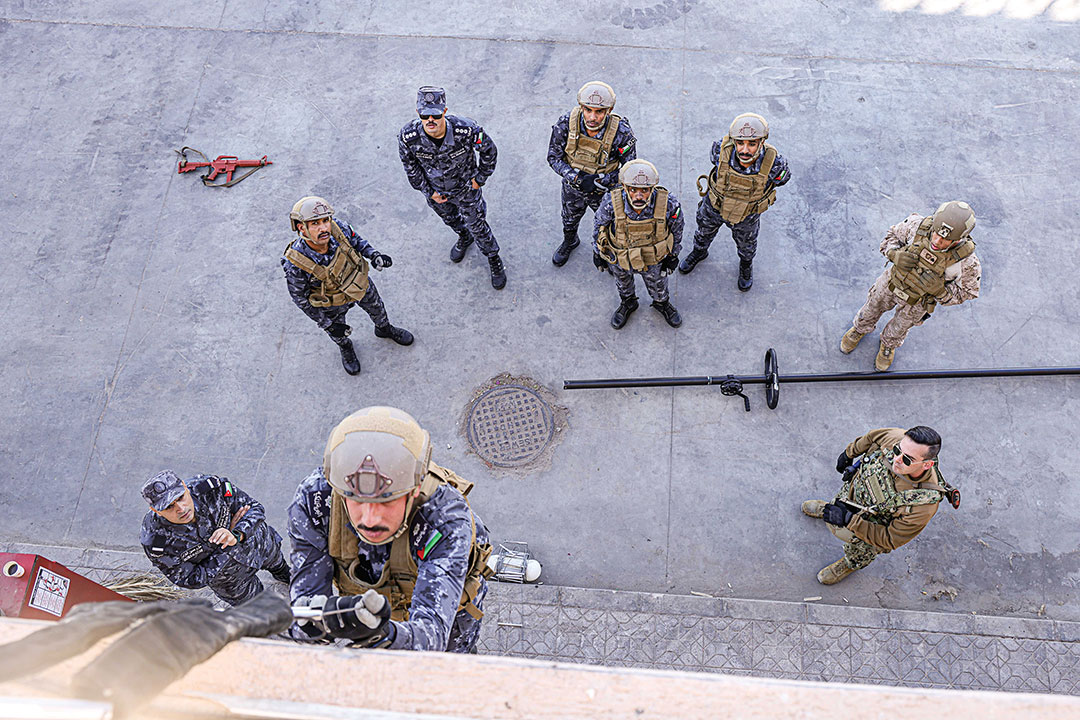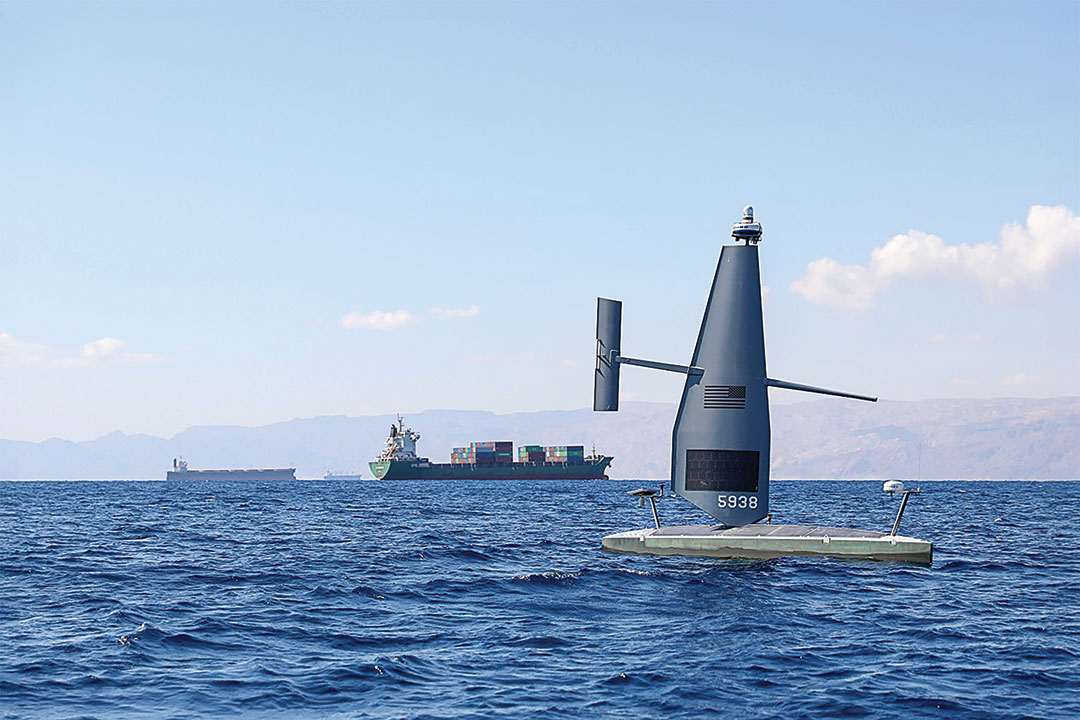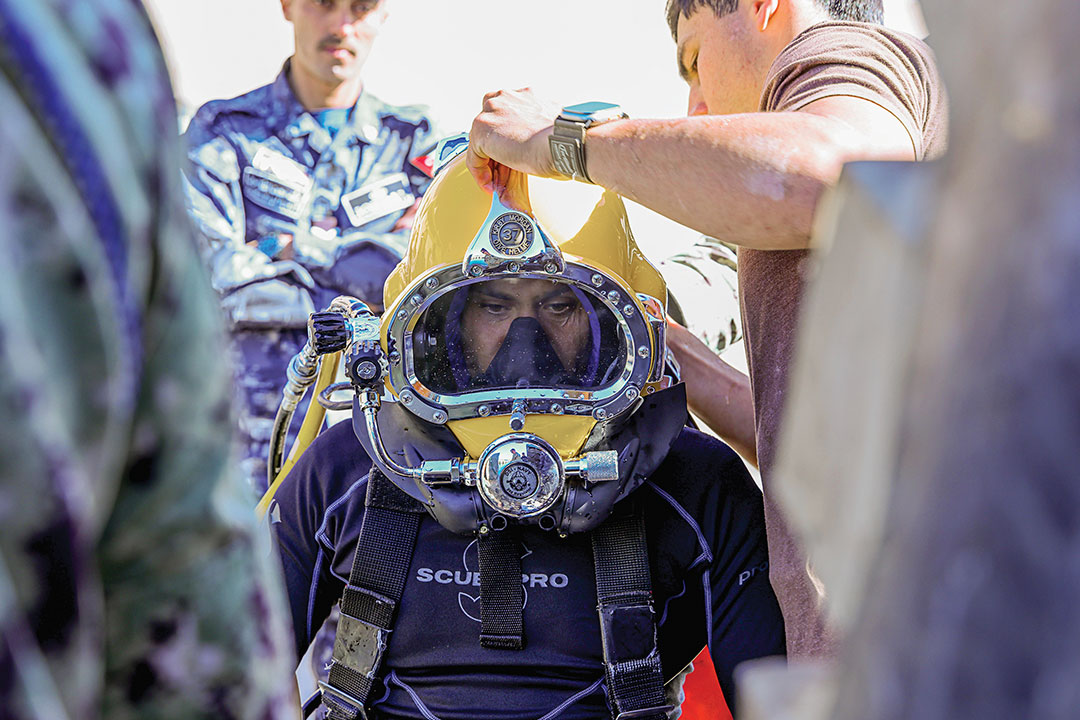The International Maritime Exercise (IMX) assembles maritime forces from dozens of nations to reinforce teamwork, partnerships, integration and interoperability. They practice arresting maritime smugglers, defending sea lanes, disarming mines, launching sea drones and protecting ports.
The February 2025 version of the IMX added another dimension to expand the capabilities of the training audience: a complex evacuation of thousands of tsunami victims from a fictional nation.
This exercise brought forward many viewpoints to handle a single situation in various different ways. I am confident that the takeaways of this exercise will serve all the participants in planning and executing various exercises in their respective countries.” ~ Pakistan Navy Commodore Rashid Mahmood Sheikh
This scenario provided a larger role for amphibious troops from U.S. Task Force 51/5th Marine Expeditionary Brigade and their multinational partners. Operating from a command post in Manama, Bahrain, these resourceful and adaptive troops from Pakistan, Egypt, the United States and Europe drew on airpower as much as naval power to accomplish the training mission.
“This exercise brought forward many viewpoints to handle a single situation in various different ways,” said Pakistan Navy Commodore Rashid Mahmood Sheikh, who led the command post exercise. “I am confident that the takeaways of this exercise will serve all the participants in planning and executing various exercises in their respective countries.”
IMX 25 involved 5,000 military personnel from more than 30 nations. This 12-day maritime security and stability exercise ran concurrently with East African maritime exercise Cutlass Express. Participating forces fanned out across the Arabian Gulf, Gulf of Oman, Gulf of Aden, Red Sea and East African coastal regions.

In the Jordanian port of Aqaba, IMX troops merged into Combined Task Force West, strengthened by units from the Royal Jordanian Navy, Yemeni Coast Guard and Egyptian Armed Forces. Combined Task Force East based in Bahrain included representation from Bahrain, Egypt, Oman, Pakistan, Qatar and the United Arab Emirates.
An IMX global medical engagement in Bahrain drew troops from even farther afield. Medics and physicians from Kazakhstan and Uzbekistan joined partners from Bahrain, Jordan, Pakistan, the Philippines and the U.S. to form a multinational team to treat combat casualties on the battlefield.
U.S. Navy Vice Adm. George Wikoff, commander of U.S. Naval Forces Central Command and U.S. 5th Fleet, was among the senior officers expressing appreciation for the friendly coordination among multinational forces despite different languages and military doctrines.
“It’s inspiring to see so many nations working together. The incredible level of international representation is pivotal to our success of safeguarding regional waterways and enabling the free flow of commerce,” Vice Adm. Wikoff said. “IMX 2025 was truly about partnering to strengthen and expand our capabilities.”
IMX originated in 2012 as a naval exercise focused on detecting, avoiding and destroying sea-based mines. Although that training continued in the 2025 exercise — centered on a mine countermeasures task force based in the Gulf of Oman — IMX has widened its scope to adopt technological advances in drones and artificial intelligence.

The use of unmanned naval vessels — floating on the surface, peering underwater and flying overhead — helped Sailors detect potentially dangerous adversaries intent on disrupting shipping or attacking ports. These robotic systems appeared in the Arabian Gulf to protect ships plying strategic waterways like the Strait of Hormuz.
In the training scenario at Aqaba, an underwater drone detected a boat full of terrorists in the northern Red Sea entering Jordanian territorial waters, alerting multinational forces in time to defeat the threat.
“The exercise simulated the reality of current and future threats by integrating artificial intelligence systems to eliminate all forms of potential threats to preserve shipping lanes in the Red Sea, because it is one of the busiest routes linking Asia and Europe,” said Col. Hisham Al Jarrah, commander of the Royal Jordanian Navy.
As the host country for much of IMX 25, Bahrain supplied a large portion of the forces engaged. The troops came not only from the Navy but also from Army engineers, special forces and medical services. The Bahraini frigate Khalid bin Ali, crewed by 160 Sailors and officers, sailed as part of a multinational naval force at IMX. It joined a multinational flotilla that included Pakistan Navy Ship Saif, a guided-missile frigate.

“We are honored to host an international naval exercise of this size and with the participation of more than 30 countries,” Bahraini Navy Commander Rear Adm. Ahmad bin Ali said. “It benefited us greatly in every way, be it with medical services, special forces or ships. Bahrain does not have ships like the destroyers and minesweepers that participated in the exercise, so when our officers serve on them, they gain valuable experience.”
Familiarization with drones is also a valuable training goal for Bahraini forces, Rear Adm. Ahmad said.
“The U.S. Navy has focused on introducing integrated systems of marine drones to monitor terrorist activities, maritime crimes and piracy across vast areas of sea,” he said. “It has also invited friendly countries to participate in specialized training courses on these modern technologies, and we were able to witness the effectiveness of these technologies during the exercise.”
IMX 25 marked the ninth iteration of the maritime exercise since its 2012 debut. It has grown in importance as threats to shipping emerge in strategic waterways like the Bab el-Mandeb, the Suez Canal and the Strait of Hormuz.
United Arab Emirates Navy Capt. Al Balooshi, one of the commanders at IMX, expressed pride at the success
of the joint training mission that would benefit real-world military operations.
“Let us continue to work toward a safer, more secure maritime environment where our nations can interact in peace and prosperity,” the captain said.

Participation from Central Asian nations such as Kazakhstan was a highlight of IMX 25.
“As a part of its balanced foreign policy, the Republic of Kazakhstan Defense Ministry continues to maintain close cooperation with the navy component of U.S. Central Command – NAVCENT,” said former Kazakh Navy Capt. Azamat Murzabekov, former senior national representative to U.S. Central Command. “Specifically, the Kazakh Navy sent observers to International Maritime Exercise 25 that took place in February in the CENTCOM area of responsibility. The Kazakh officers familiarized themselves with the military decision-making process and shared experiences in maritime security, demining and the use of drone technologies at sea.”
Retired U.S. Gen. Michael Kurilla concurred. While commander of U.S. Central Command, he led an effort to expand the reach of multinational naval coalitions patrolling vital waterways.
“IMX 25 demonstrates the collective commitment of our respective allies and partners to support regional maritime security cooperation, increase interoperability, and strengthen security and stability in the region,” Gen. Kurilla said.

